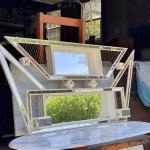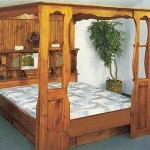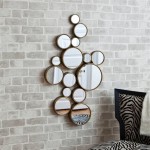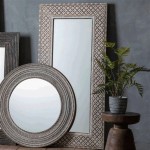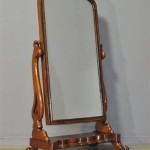Concave or Convex: Understanding Car Mirror Types and Their Role in Driver Safety
Car mirrors are fundamental to safe driving, providing essential visual information about the surrounding environment. While they may seem like simple components, their design utilizes carefully chosen geometric principles to optimize visibility. Among the most important considerations in mirror design is whether to use concave or convex surfaces. Both types of mirrors distort the image reflected, but in different and predictable ways, each offering advantages and disadvantages depending on the specific application within the vehicle.
The selection of the mirror type for a specific automotive purpose depends greatly on what the driver needs to see and how wide of a field of view is required. Typically, a combination of both convex and flat (planar) mirrors are used in today's vehicles to offer the best all-around visibility. By understanding the properties of concave and convex mirrors, drivers can better appreciate the information displayed in their mirrors and make safer, more informed decisions while operating their vehicles.
The Properties and Application of Convex Car Mirrors
Convex mirrors, characterized by their outward-curving reflective surface, are commonly used as side-view mirrors in vehicles. Their primary advantage lies in their ability to provide a wider field of view compared to flat or concave mirrors. This expanded view is crucial for detecting vehicles, cyclists, and pedestrians in the driver's blind spots. The image reflected in a convex mirror is always virtual, upright, and smaller than the actual object. This size reduction is the key to enabling the wider field of view.
The smaller image size allows more of the surrounding environment to be reflected within the mirror's boundaries. This is particularly beneficial when changing lanes or merging onto a highway, as it allows drivers to see more of the adjacent traffic. However, the reduced image size comes at a cost. Objects in a convex mirror appear farther away than they actually are. This distortion can lead to misjudgment of distances if drivers are not aware of this effect.
To mitigate the risk of misjudging distances, many convex side-view mirrors include a warning label that reads, "Objects in mirror are closer than they appear." This serves as a constant reminder to drivers that the perceived distance of objects in the mirror is not accurate. Drivers must compensate for this distortion by cross-referencing the mirror image with other visual cues, such as glancing over their shoulder before changing lanes. Newer vehicles often include blind spot monitoring systems that provide an additional layer of safety by alerting the driver to the presence of vehicles in adjacent lanes.
The curvature of a convex mirror plays a crucial role in determining its field of view and the degree of image distortion. A more pronounced curvature results in a wider field of view but also greater distortion. Automotive manufacturers carefully balance these factors to optimize the mirror's performance for safe driving. They often use aspherical mirrors, which have a varying radius of curvature across their surface, to further enhance the field of view while minimizing distortion in critical areas.
In addition to side-view mirrors, convex mirrors are sometimes used in other automotive applications, such as wide-angle mirrors mounted on the rear of large trucks or buses. These mirrors provide the driver with a comprehensive view of the area behind the vehicle, aiding in maneuvering and preventing accidents. Smaller convex mirrors can be added as after-market accessories that adhere to existing mirrors for an even wider field of view, intended to reduce, or eliminate, blind spots further.
Understanding the Limited Use of Concave Car Mirrors
Concave mirrors, with their inward-curving reflective surface, are less commonly used in standard automotive applications. Unlike convex mirrors, concave mirrors can produce both real and virtual images, depending on the object's distance from the mirror. When an object is farther away than the mirror's focal point, the image formed is real, inverted, and smaller than the object. When the object is closer than the focal point, the image is virtual, upright, and magnified.
The magnification property of concave mirrors makes them unsuitable for use as side-view or rear-view mirrors in most vehicles. A magnified image reduces the field of view, making it difficult to see a wide area around the vehicle. This presents a significant safety hazard, as drivers may not be able to detect approaching vehicles or other obstacles in their blind spots. The reduced field of view outweighs the benefit of magnification in terms of overall driving safety.
One potential application for concave mirrors in automotive design could be within advanced driver-assistance systems (ADAS). For example, a concave mirror could be used in conjunction with a camera system to create a digital zoom function. By reflecting the image onto a camera sensor, the concave mirror could effectively magnify the image, allowing the system to detect distant objects or road markings with greater precision. However, such applications are still largely experimental and have not yet been widely adopted in production vehicles.
Another potential use is in the design of automotive headlights. Concave mirrors can be used to focus the light emitted from a bulb into a concentrated beam, improving visibility at night. By carefully shaping the mirror, engineers can control the direction and intensity of the light, maximizing its effectiveness while minimizing glare for oncoming drivers. This technology is widely employed in modern headlight designs.
Despite these niche applications, the inherent limitations of concave mirrors in terms of field of view and image distortion make them unsuitable for primary viewing functions in vehicles. The safety implications of a reduced field of view far outweigh any potential benefits offered by magnification or other unique properties of concave mirrors. The advantages and disadvantages relative to each other are why convex mirrors are commonly placed on passenger vehicles.
Comparative Analysis and Future Trends
The choice between concave and convex mirrors in automotive design is ultimately driven by the need to balance field of view, image distortion, and safety considerations. Convex mirrors offer a wider field of view, but with the trade-off of image distortion. Concave mirrors can magnify images but at the expense of a reduced field of view. For most automotive viewing applications, the wider field of view offered by convex mirrors is essential for safe driving.
As technology advances, alternative viewing systems, such as camera-based systems, are becoming increasingly prevalent in vehicles. These systems offer the potential to overcome the limitations of traditional mirrors by providing a wider field of view, reducing blind spots, and even incorporating augmented reality features. However, these systems are still relatively expensive and require sophisticated image processing algorithms to function effectively. Their overall reliability in various weather and lighting conditions is still being studied. Even with the incorporation of digital mirror systems, there is still a preference for the installation of traditional mirrors as backup systems.
One area of ongoing research is the development of mirrors with variable curvature. These mirrors could dynamically adjust their curvature based on the driving situation, providing a wider field of view when needed and reducing distortion when a closer view is required. Such mirrors could potentially combine the best features of both concave and convex mirrors, offering a more versatile and adaptable viewing system. These technologies may incorporate liquid crystal or other advanced materials to enable precise control over the mirror's shape and reflectivity. They could also be integrated with the vehicle's ADAS to automatically adjust the mirror's settings based on factors such as speed, traffic conditions, and driver behavior.
Furthermore, advancements in material science and manufacturing techniques are leading to the development of lighter, more durable mirrors with improved optical performance. These advancements can improve fuel efficiency and reduce the risk of damage in the event of an accident. Additionally, researchers are exploring new coatings and surface treatments that can enhance the mirror's reflectivity, reduce glare, and even repel water and dirt, improving visibility in adverse weather conditions. Ultimately, the future of automotive mirrors will likely involve a combination of traditional optical principles and advanced technologies, working together to enhance driver safety and awareness.

Convex And Concave Mirrors In Cars

Convex Mirrors Use Car

Concave Vs Convex Mirrors In Cars

Types Of Mirror For Vehicles Concave Vs Convex Sunway Autoparts
In Trucks Cars Buses Side View Mirrors Are Convex But Center Rear Mirror Is Or Plane Quora

Convex Concave Mirror Car Motorcycle Rear View Glass China Silver Made In Com
Objects In The Mirror Are Actually Images Article Khan Academy

The Reason Why Objects In A Car S Side View Mirror Are Closer Than They Appear Mental Floss

Concave Vs Convex Mirrors In Cars

Car Mirror Hd Convex Blind Spot Auto Rearview Temu United Arab Emirates

